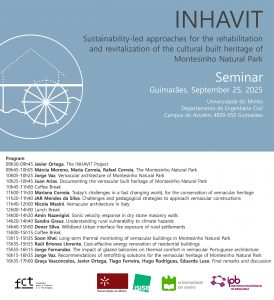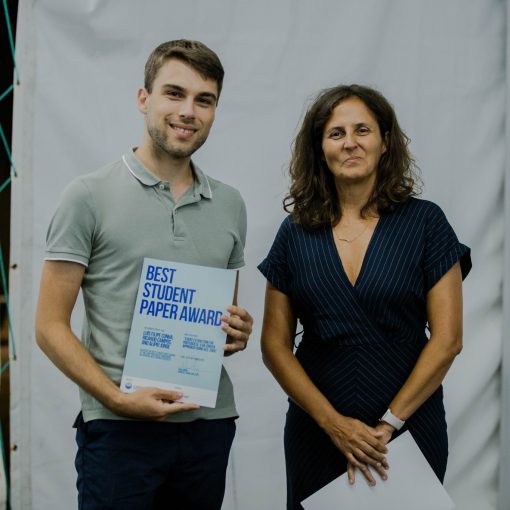On 25 September, the results of the scientific project ‘INHAVIT – Sustainable approaches to the rehabilitation and revitalisation of the built cultural heritage of the Montesinho Natural Park’, located in the municipalities of Bragança and Vinhais, were announced. The session was held in the main auditorium of the University of Minho, on the Azurém campus in Guimarães, with free admission.
The project was coordinated by Javier Ortega and Graça Vasconcelos, from the UMinho School of Engineering and the Institute for Sustainability and Innovation in Structural Engineering (ISISE), in partnership with the University of Aveiro and the Polytechnic Institute of Bragança. It ran for three years and received €249,000 in funding from the Foundation for Science and Technology.
The team characterised the villages belonging to the Montesinho Natural Park, from the type of construction (houses, mills, wine presses, shelters, etc.), the materials and structural aspects, and the socio-demographic, economic and environmental context. Risk mitigation and built heritage preservation strategies are proposed, namely improving housing conditions and accessibility, to affirm local identity, sustainable development and the continued occupation of that Trás-os-Montes territory. It is hoped that this project will have an impact on other Mediterranean areas in a similar situation, bringing new perspectives to address challenges such as depopulation, the loss of character of traditional built heritage and territorial cohesion.
The final seminar of ‘INHAVIT (MTS/BRB/0086/2020)’ featured presentations by Javier Ortega, Márcia Moreno, Maria Correia, Rafael Correia, Jorge Vaz, Juan Aras, Mariana Correia, JAR Mendes da Silva, Nicola Masini, Amin Nazarigivi, Sandra Graus, Dener Silva, Soon Khei, Raúl Briones Llorente, Jorge Fernandes, Graça Vasconcelos, Tiago Ferreira, Hugo Rodrigues, and Eduarda Luso.
The Montesinho Natural Park is one of the largest protected areas in the country and a pillar of regional and national identity. It stands out for its cultural richness, thanks to the communities that maintain ancestral rural ways of life, but also for its rich landscape, ecology and biodiversity. It is part of the Natura 2000 Network, the UN’s Iberian Meseta Biosphere Reserve and is home to unique species such as the Iberian wolf and the golden eagle.




